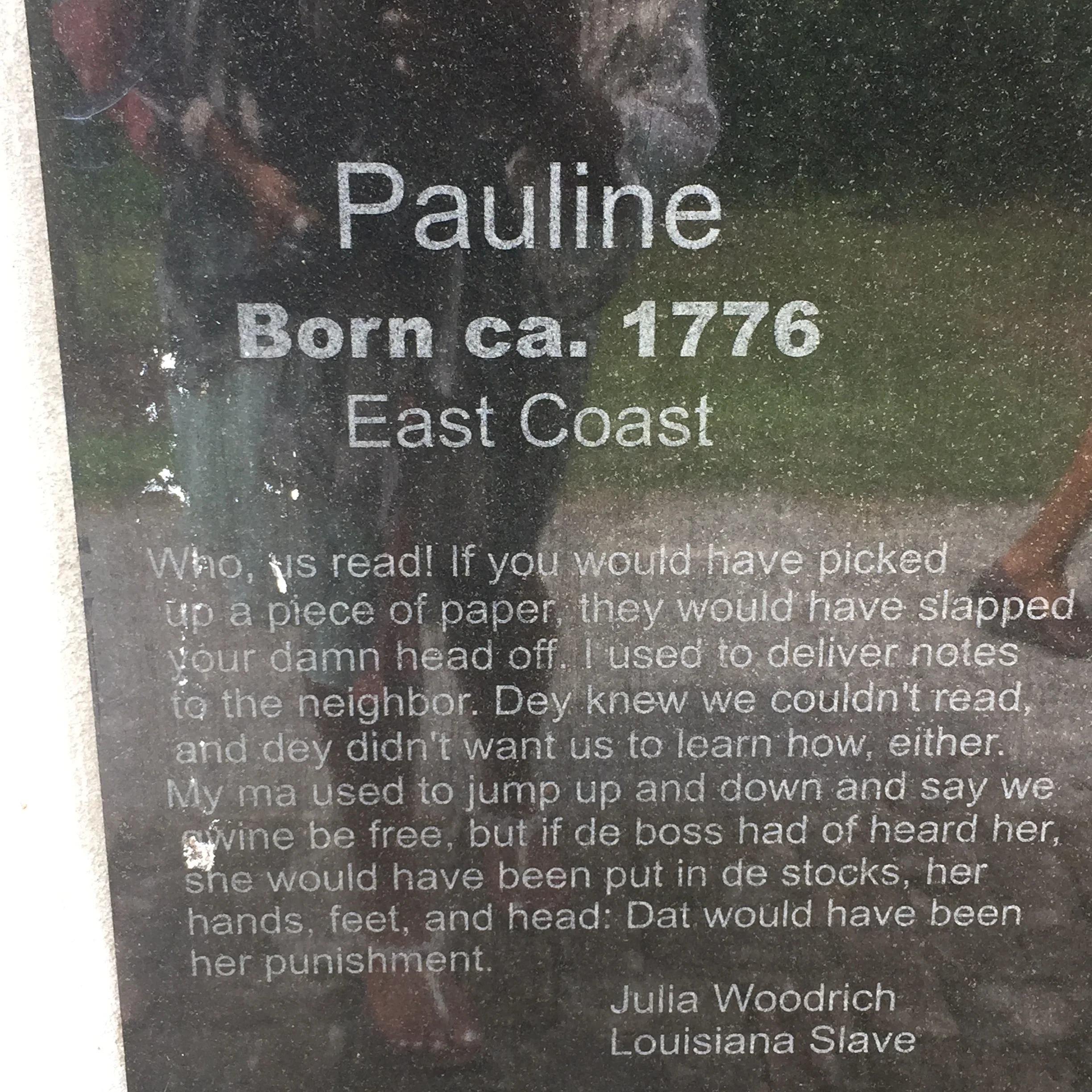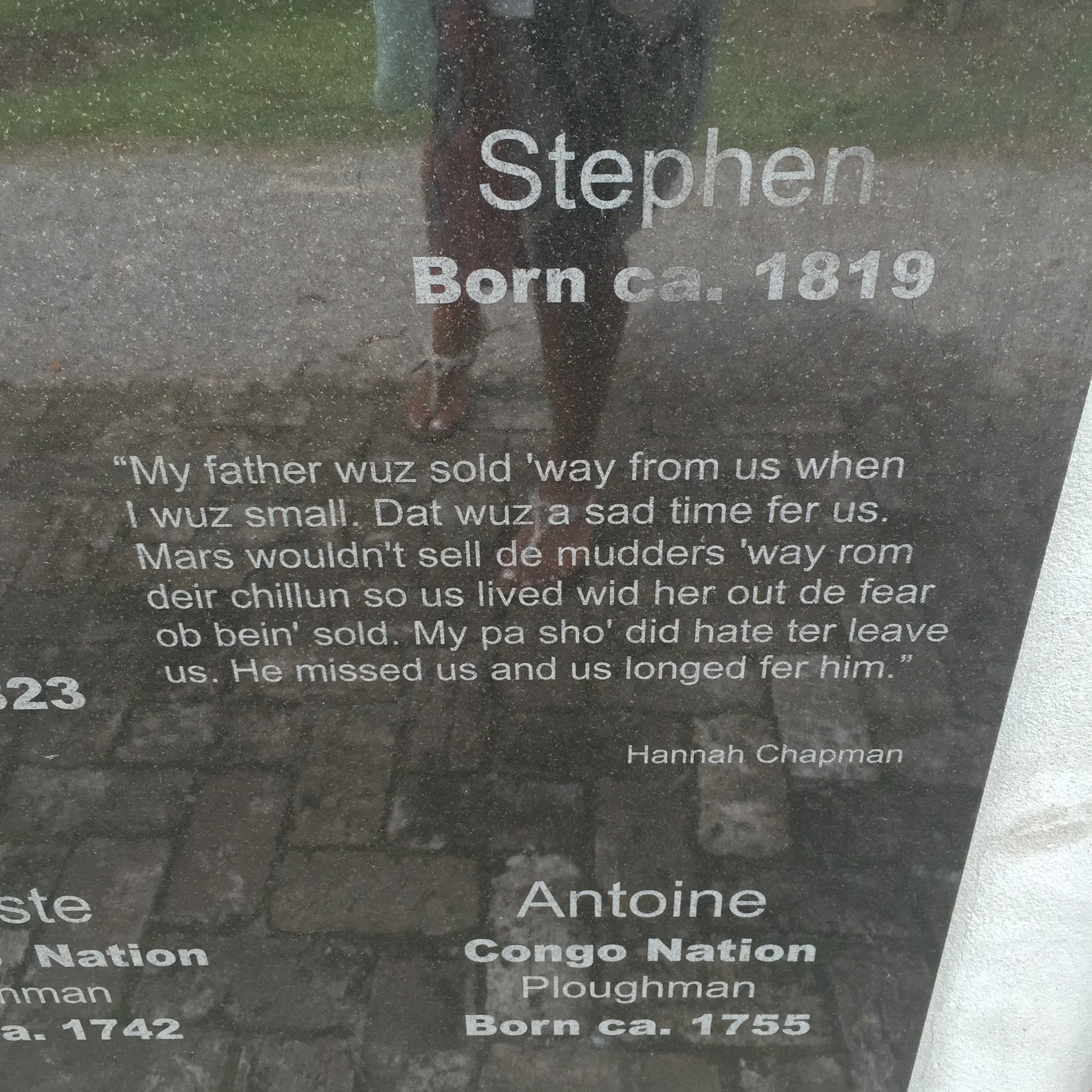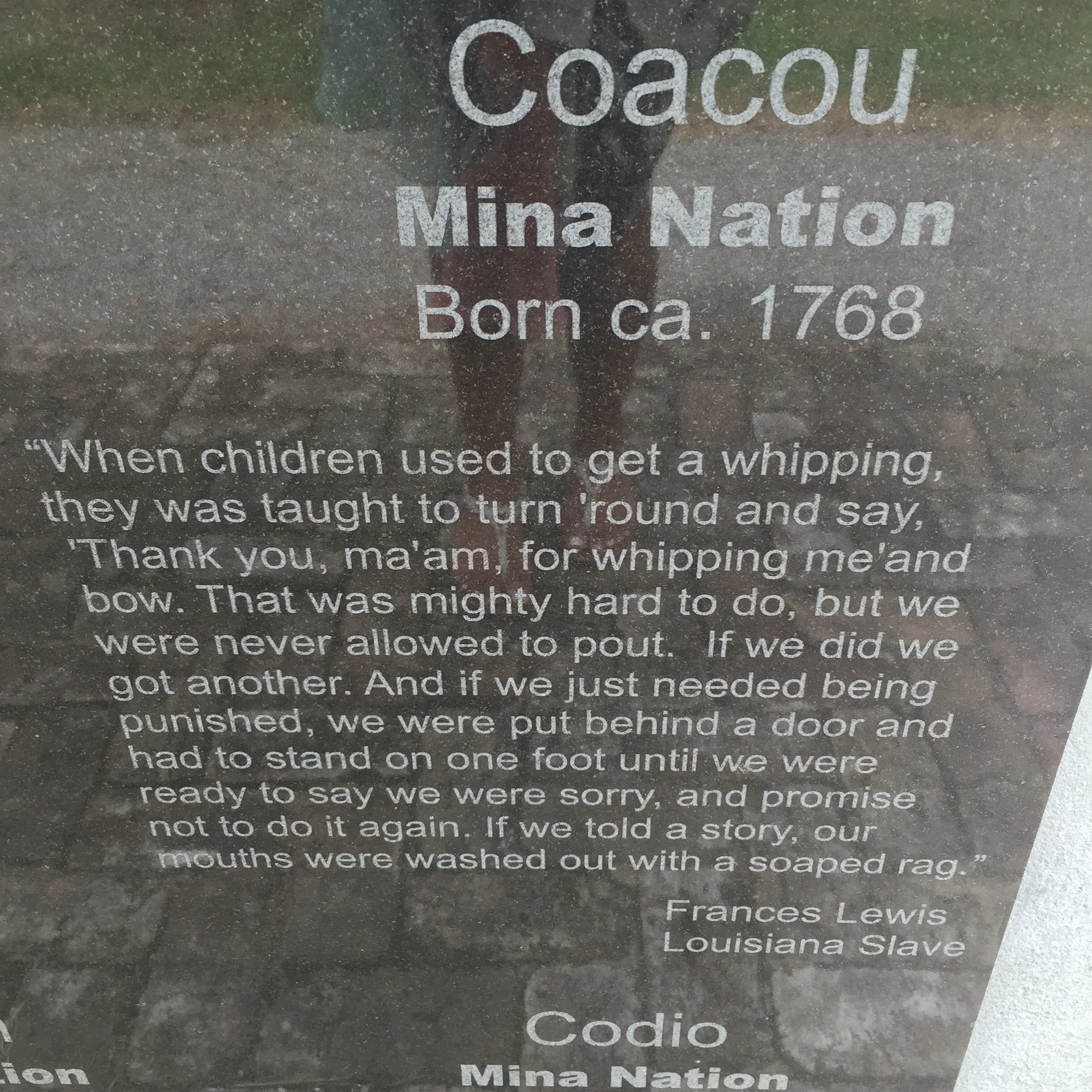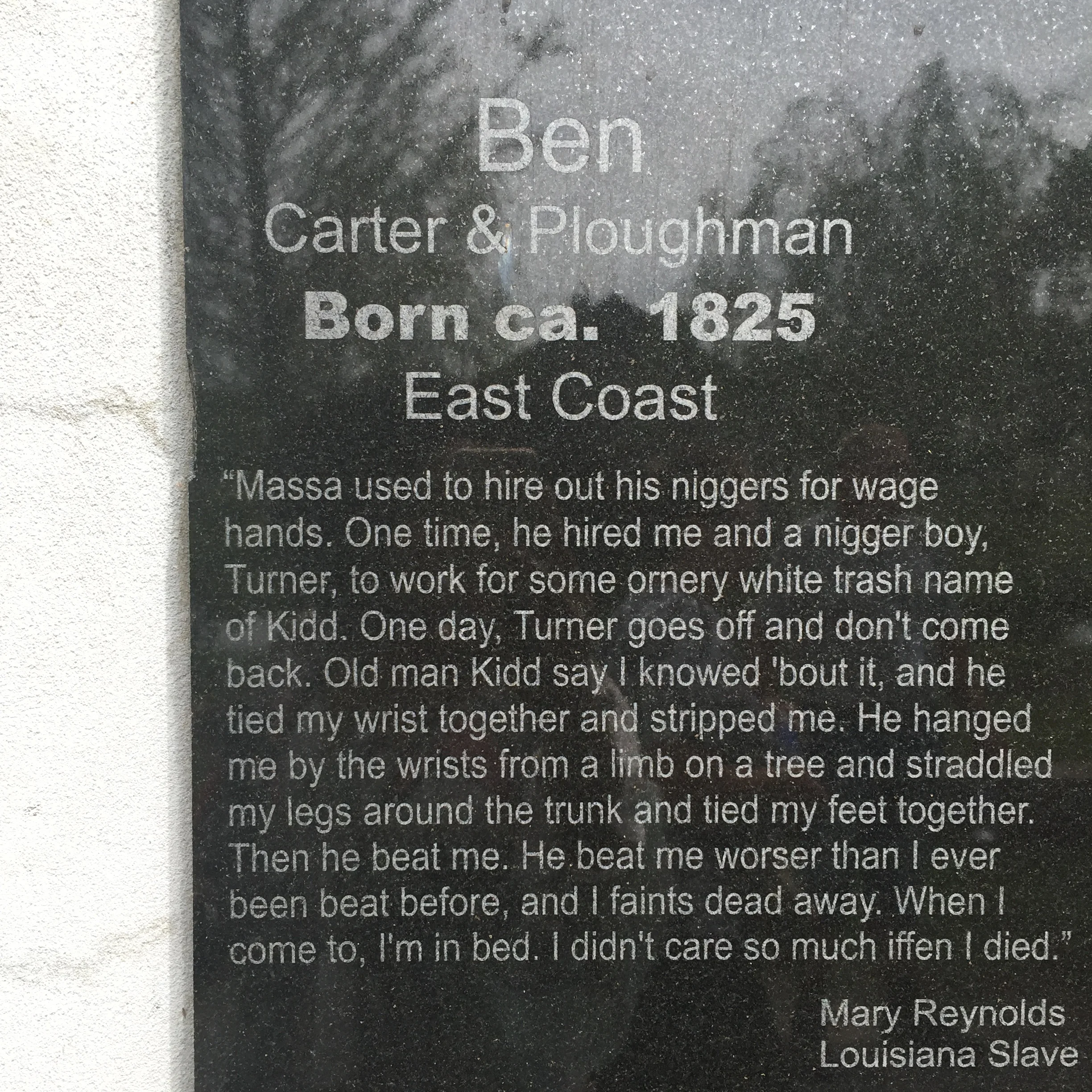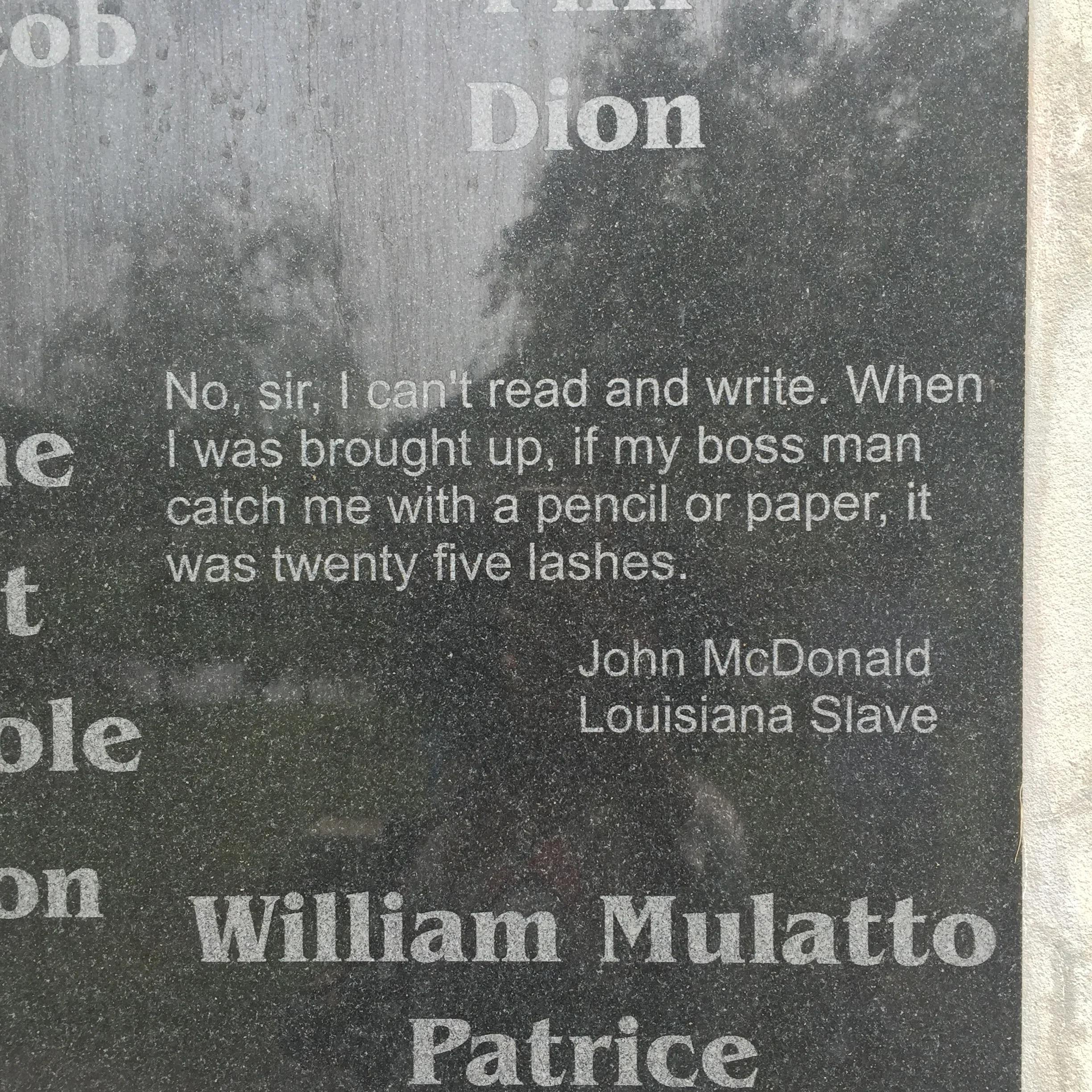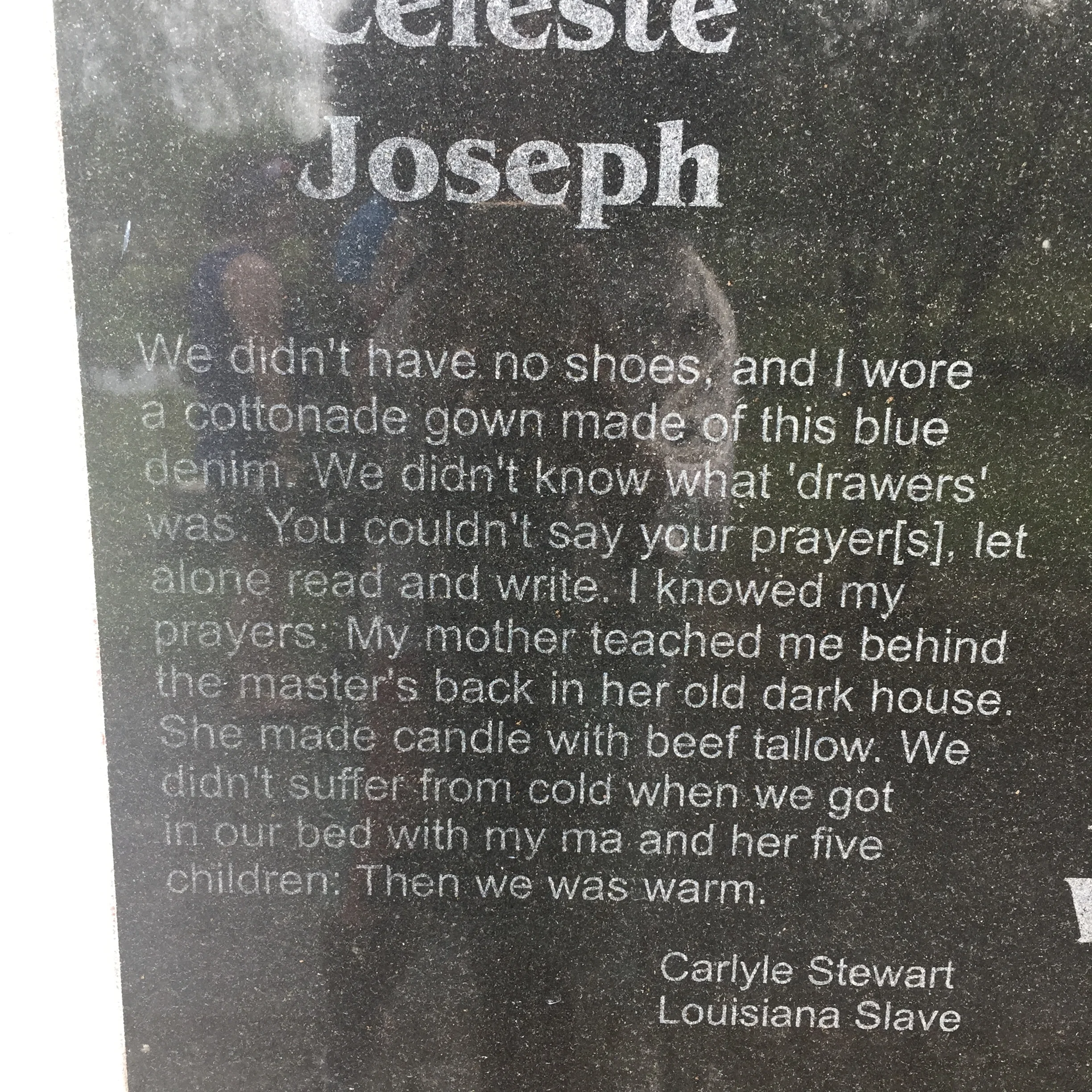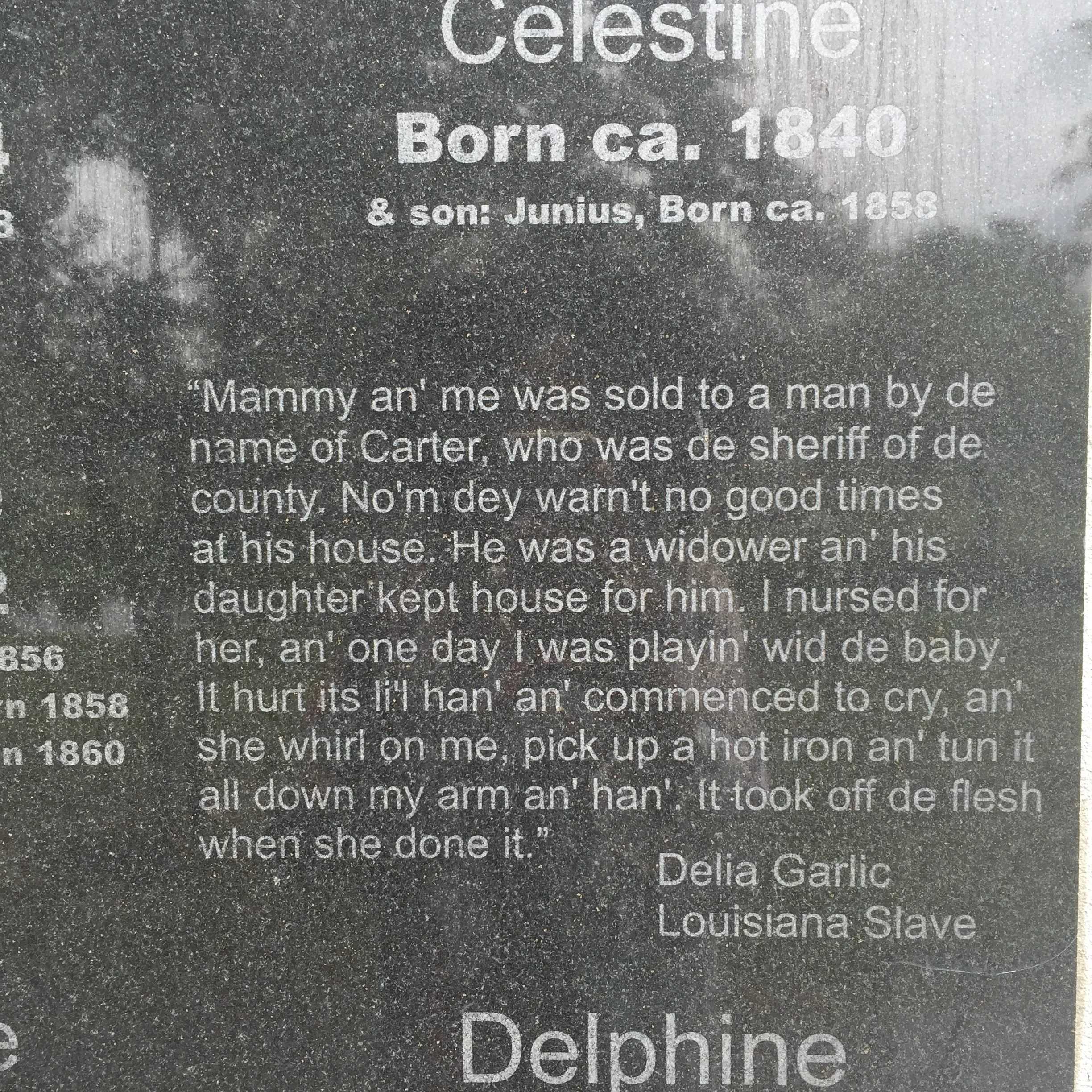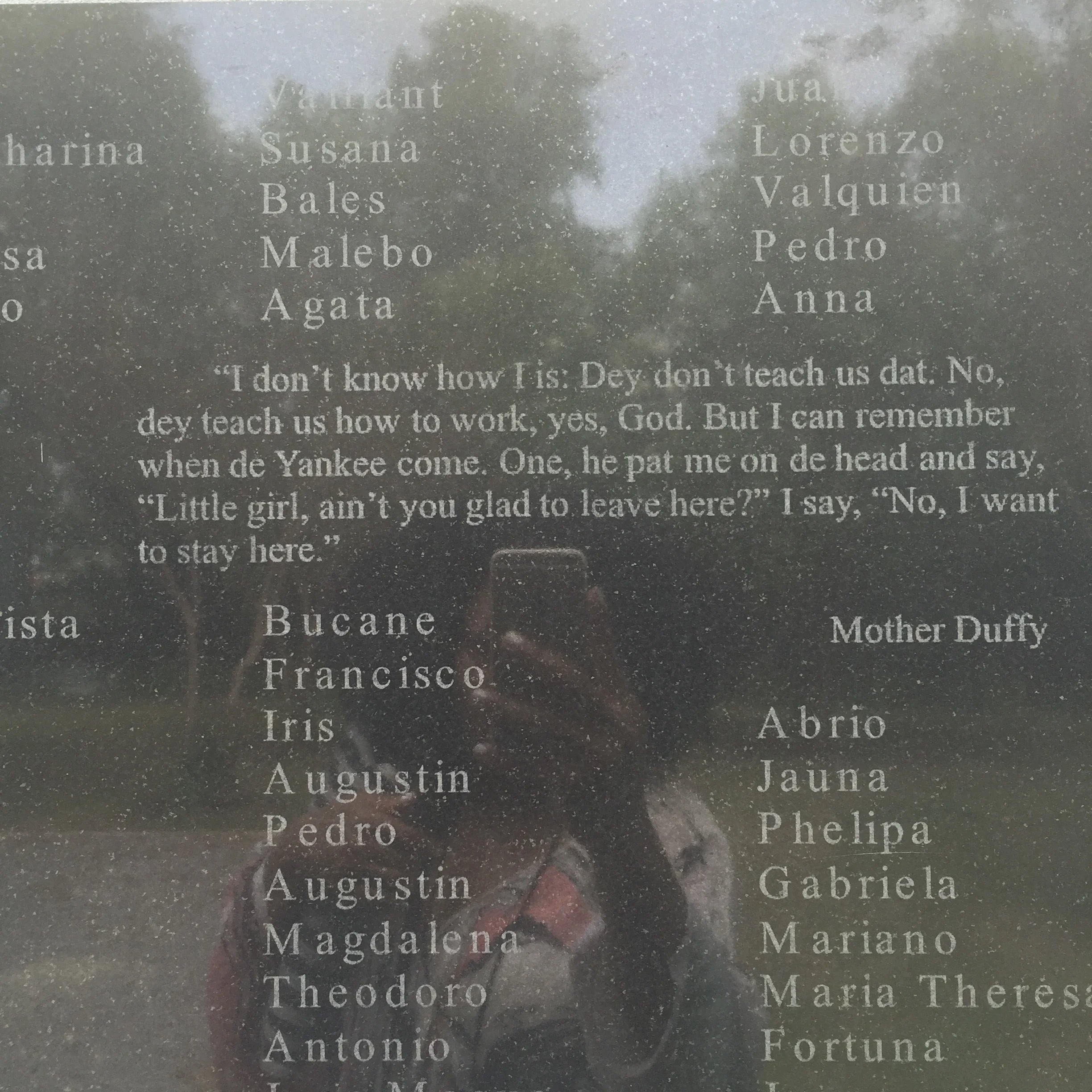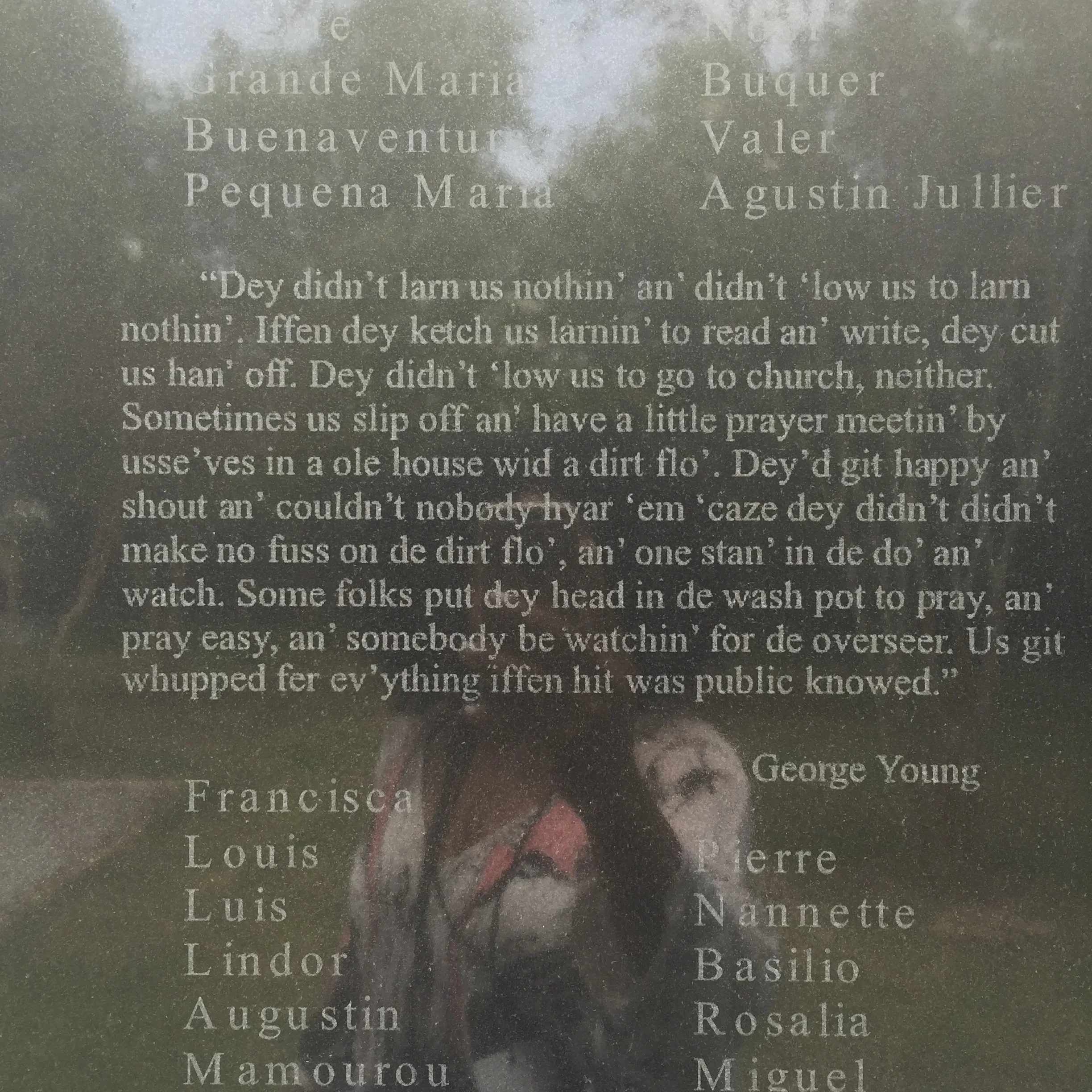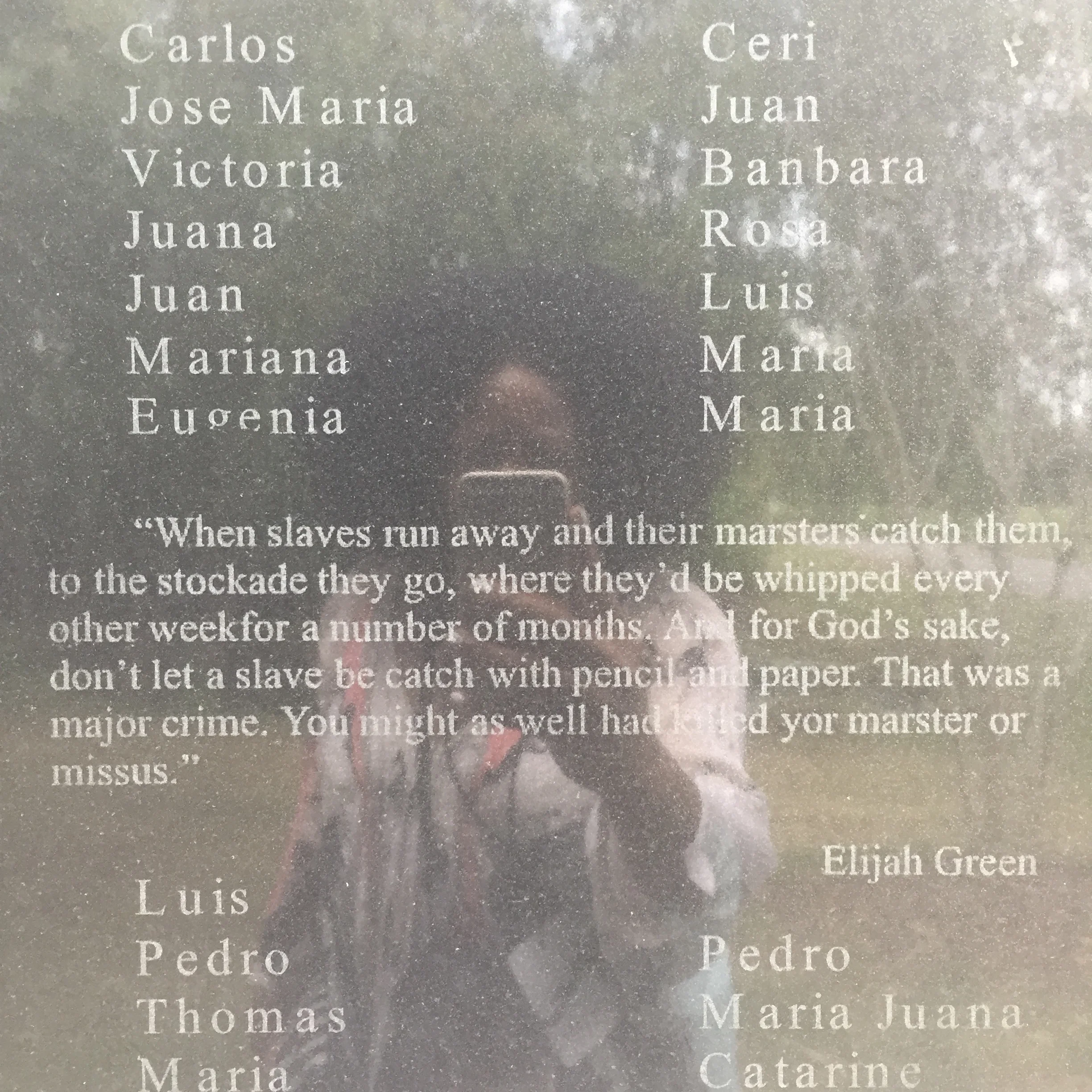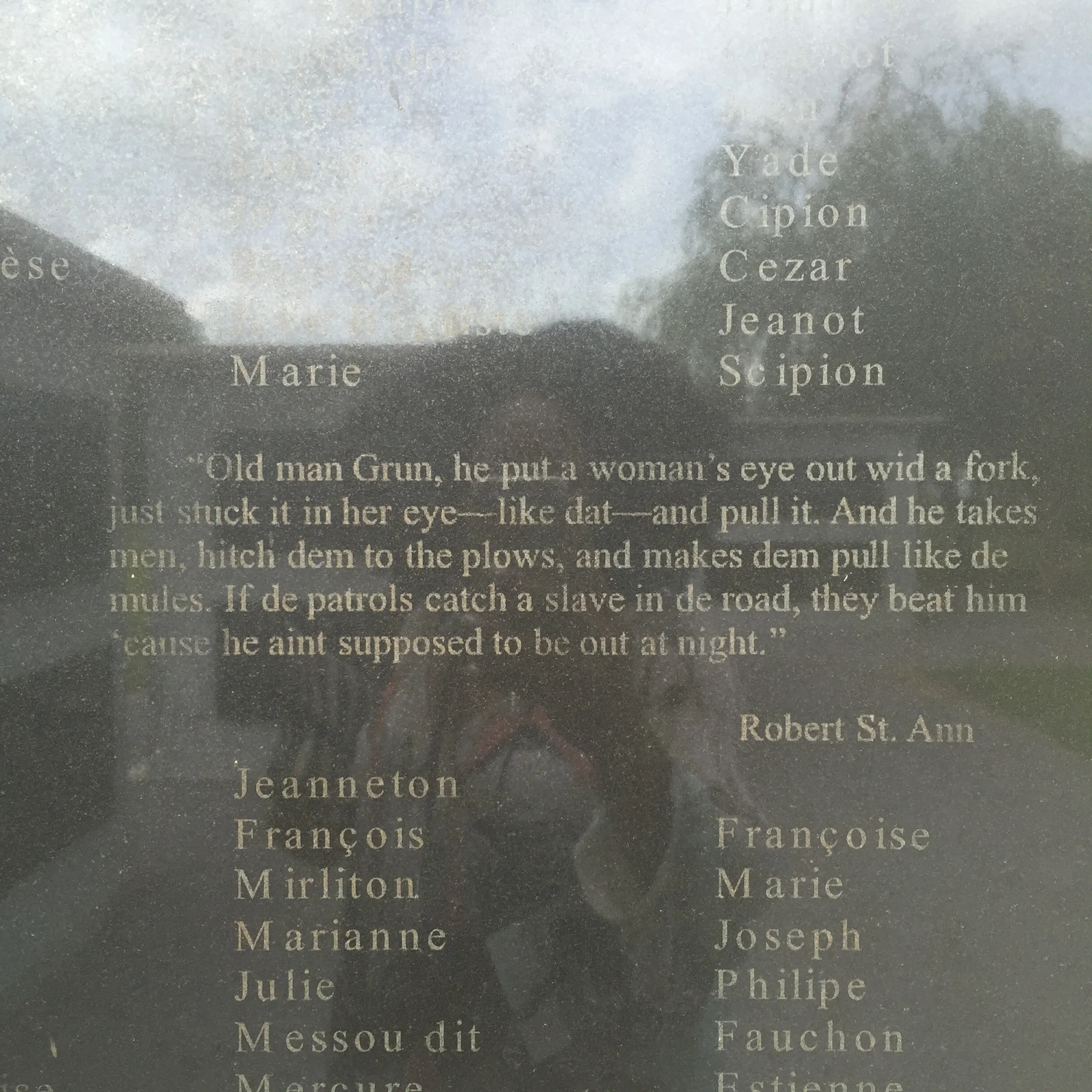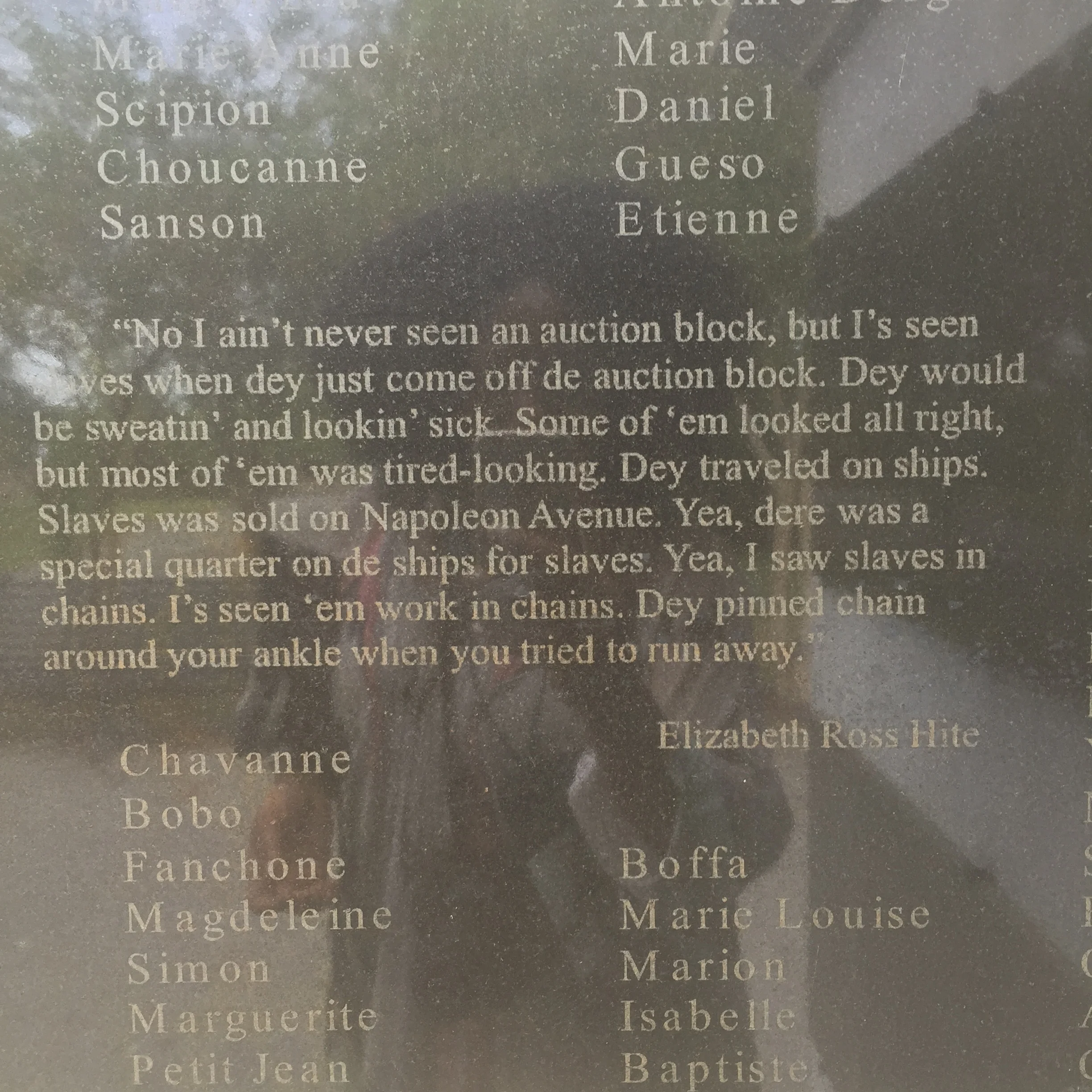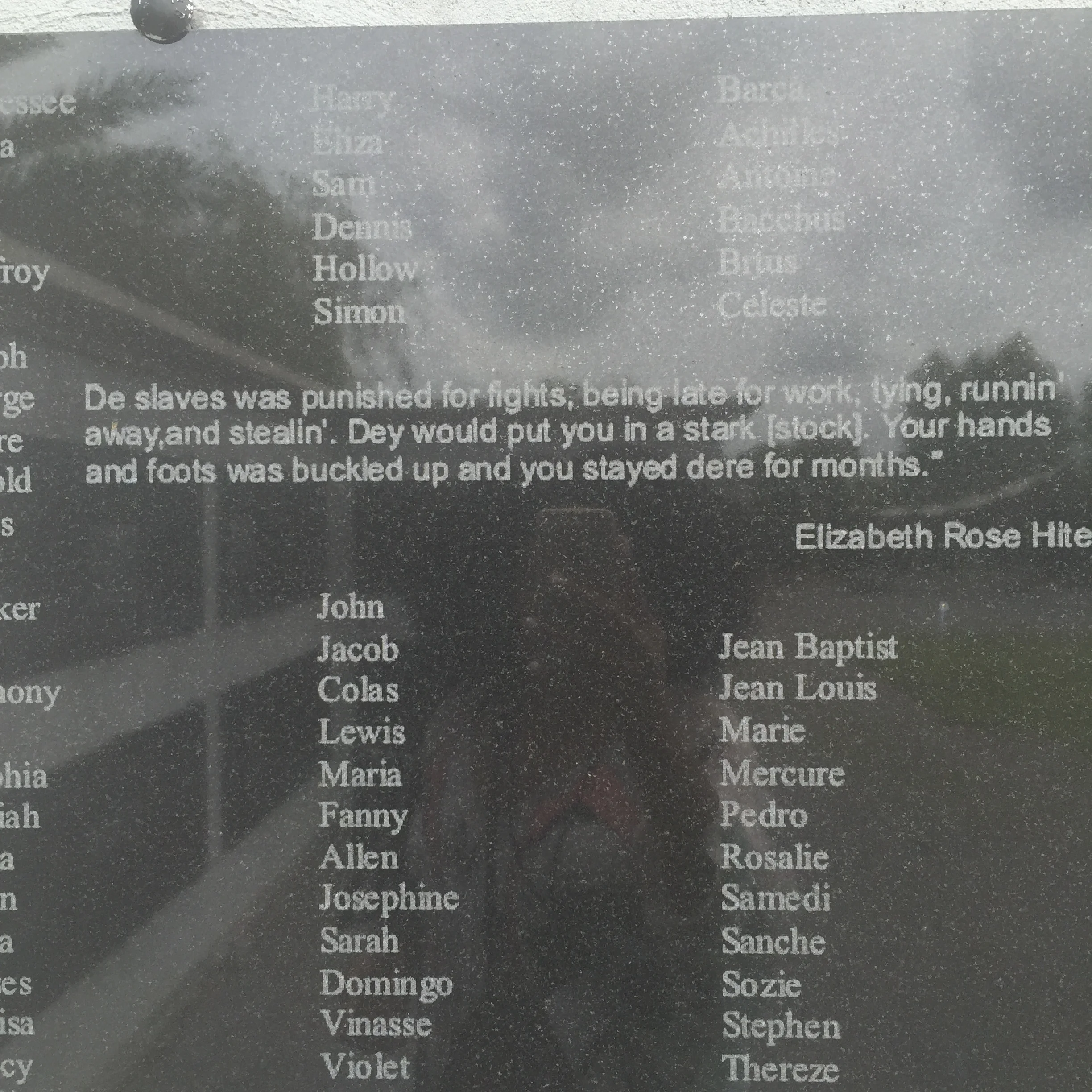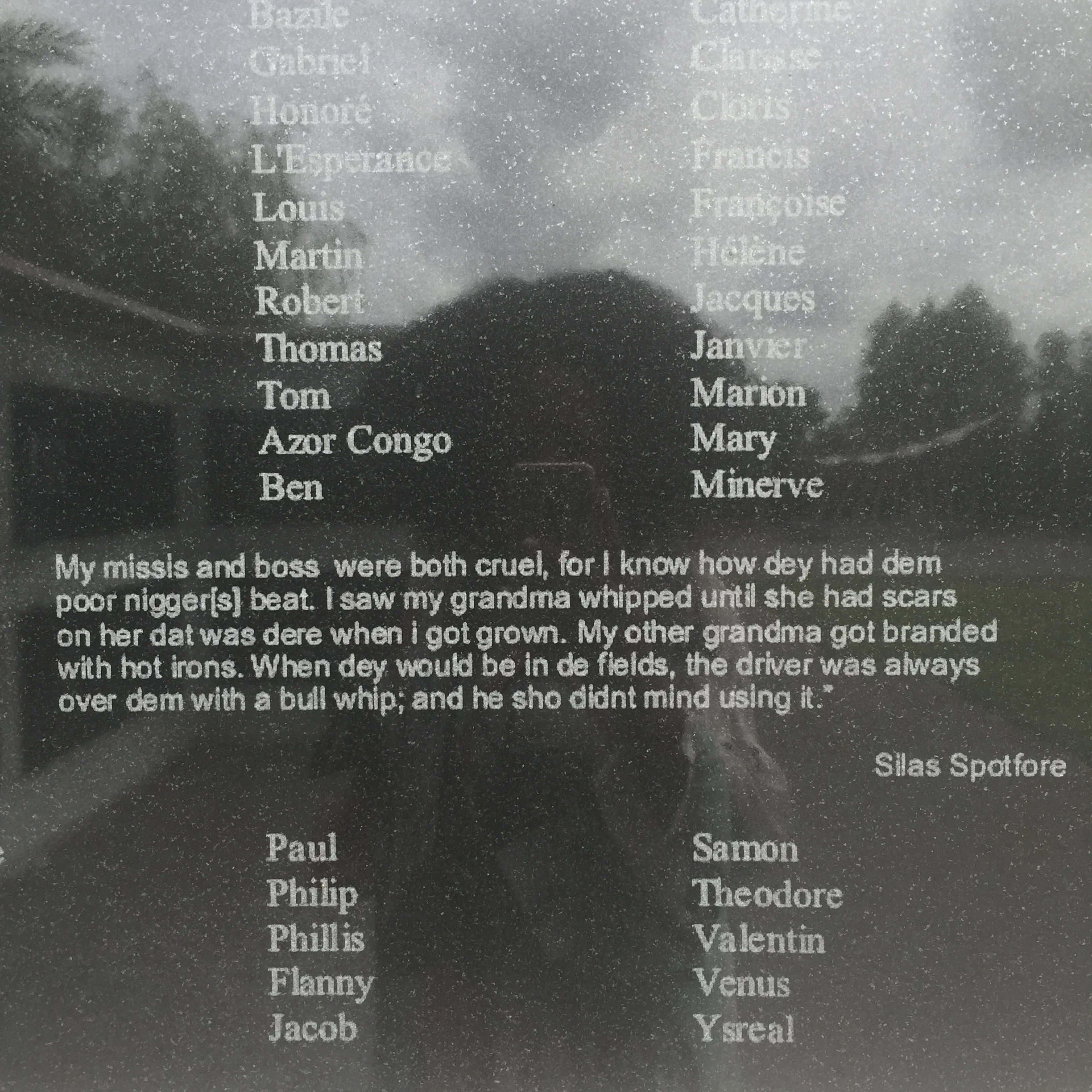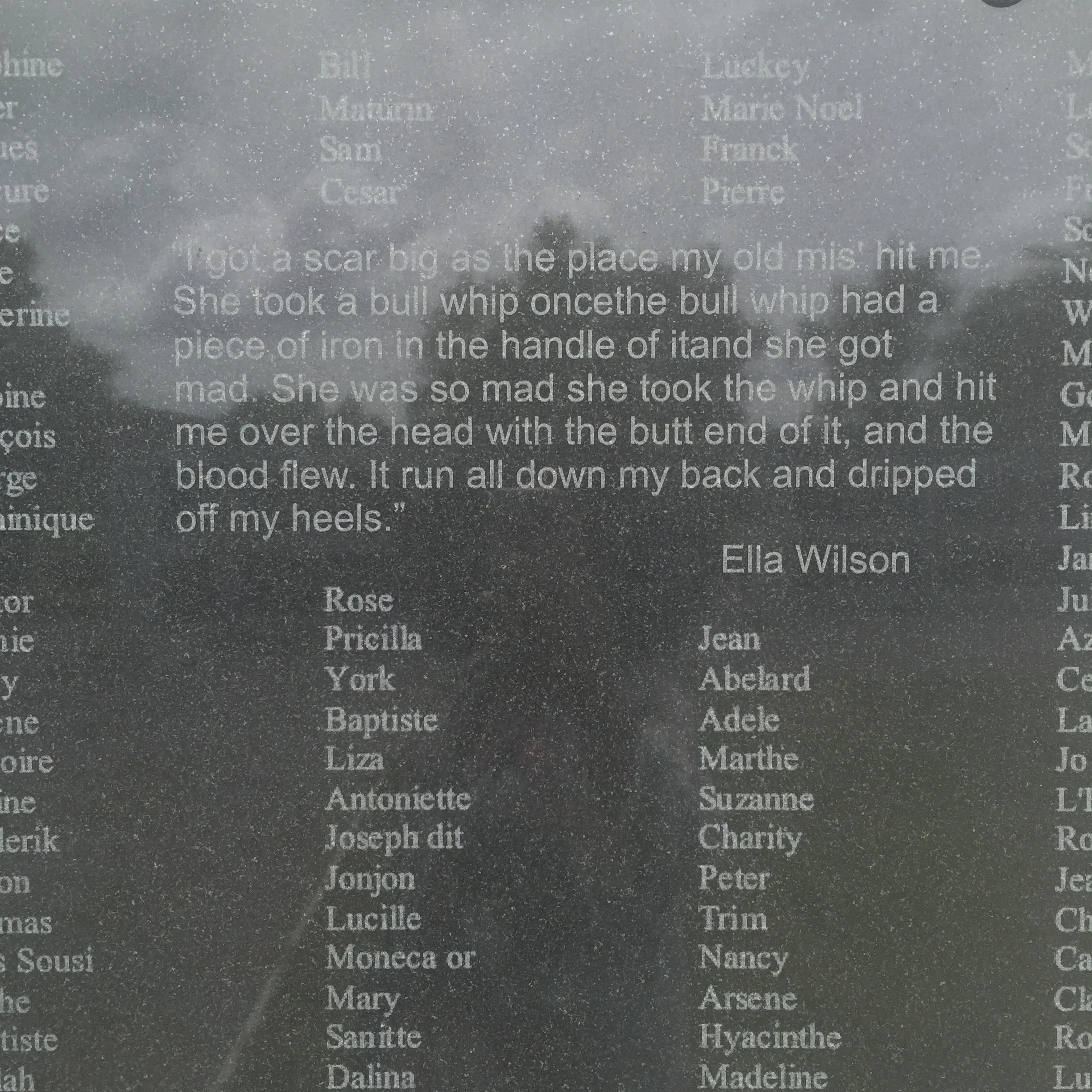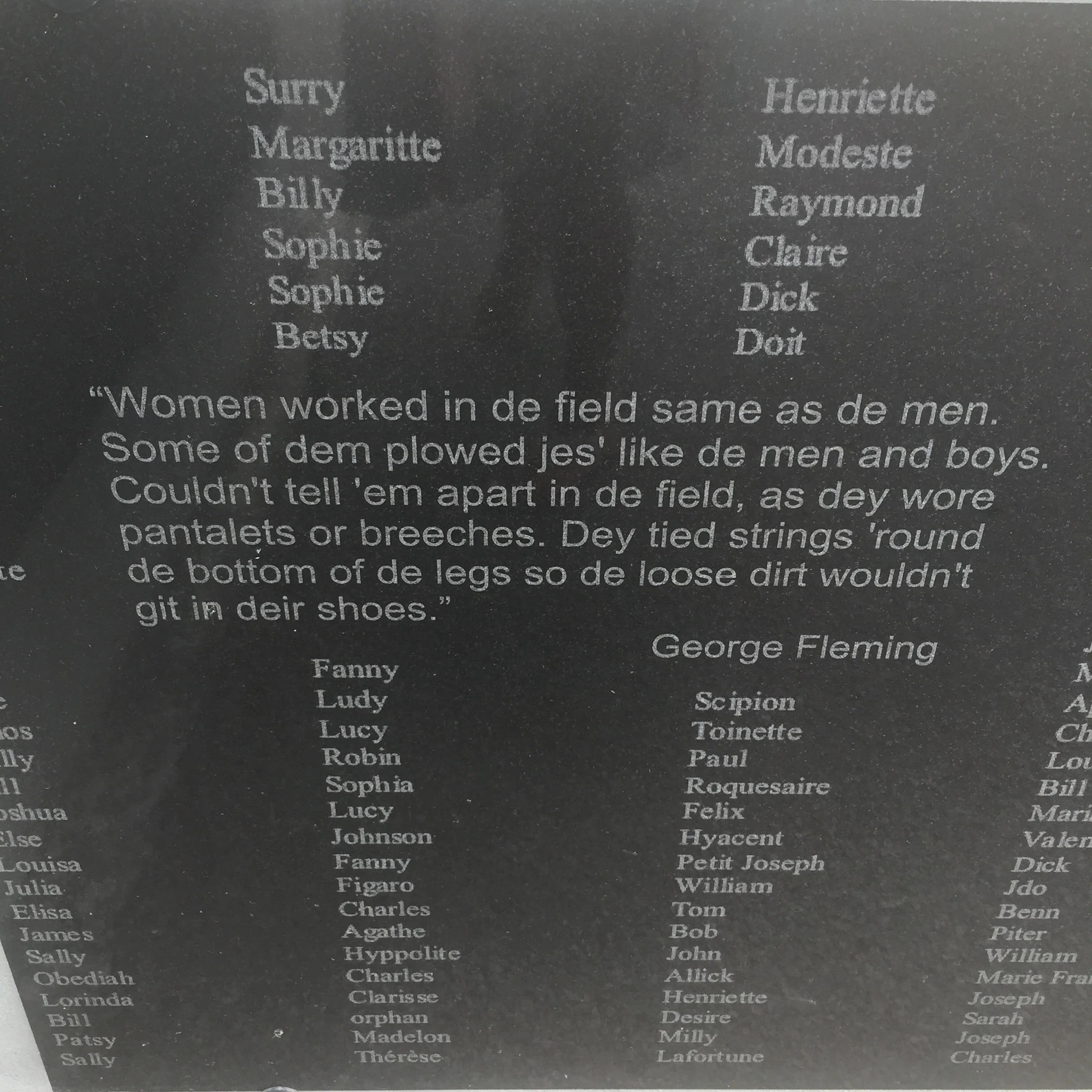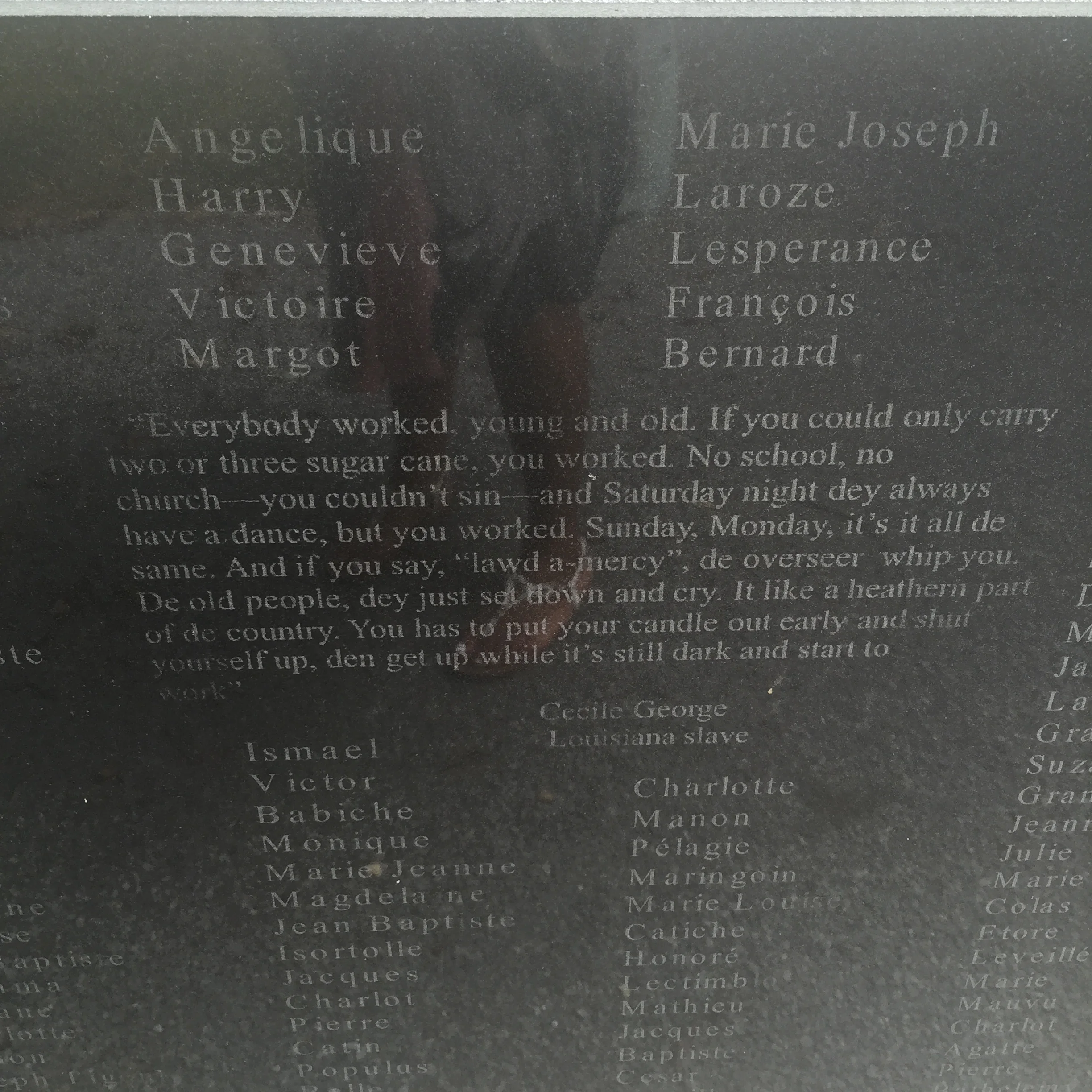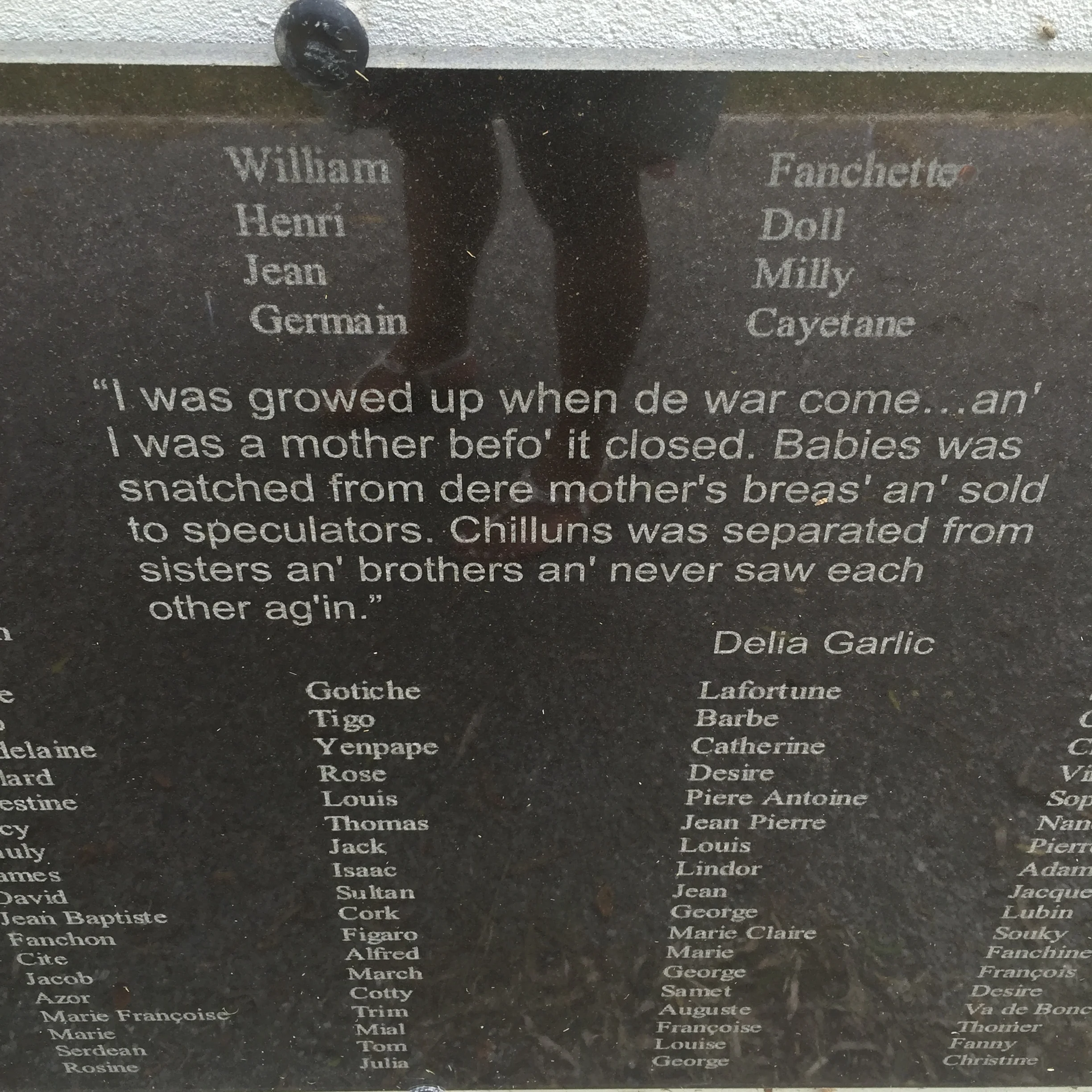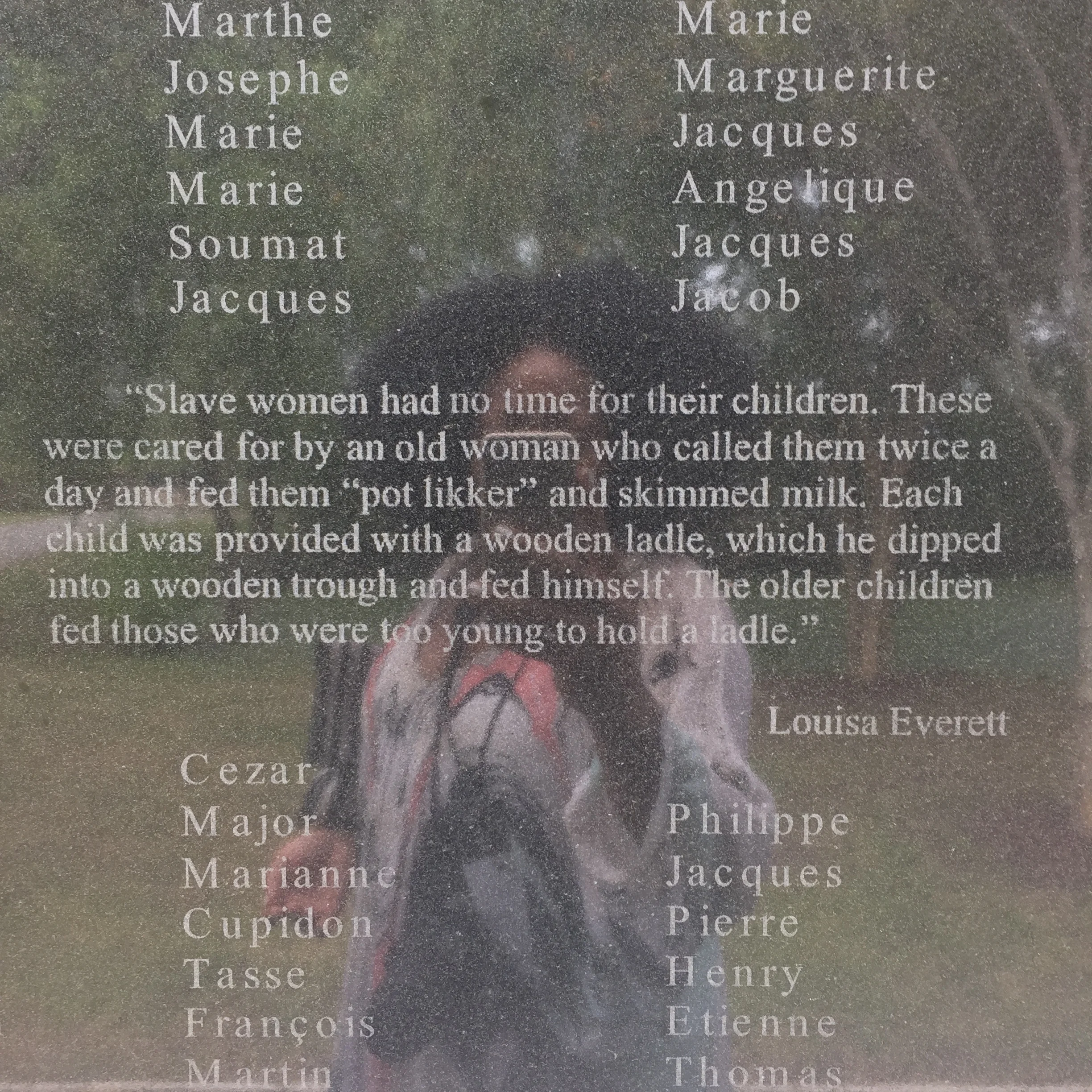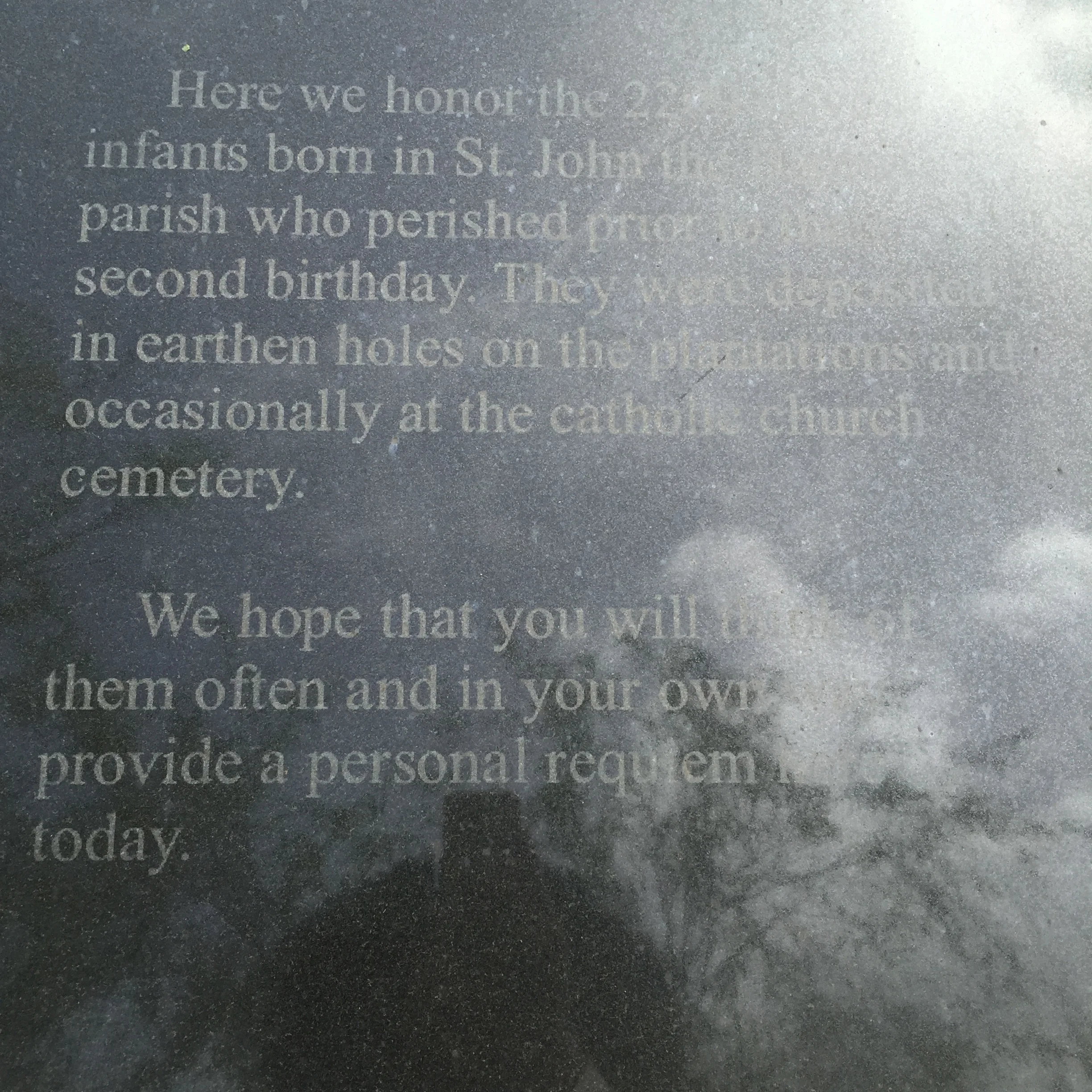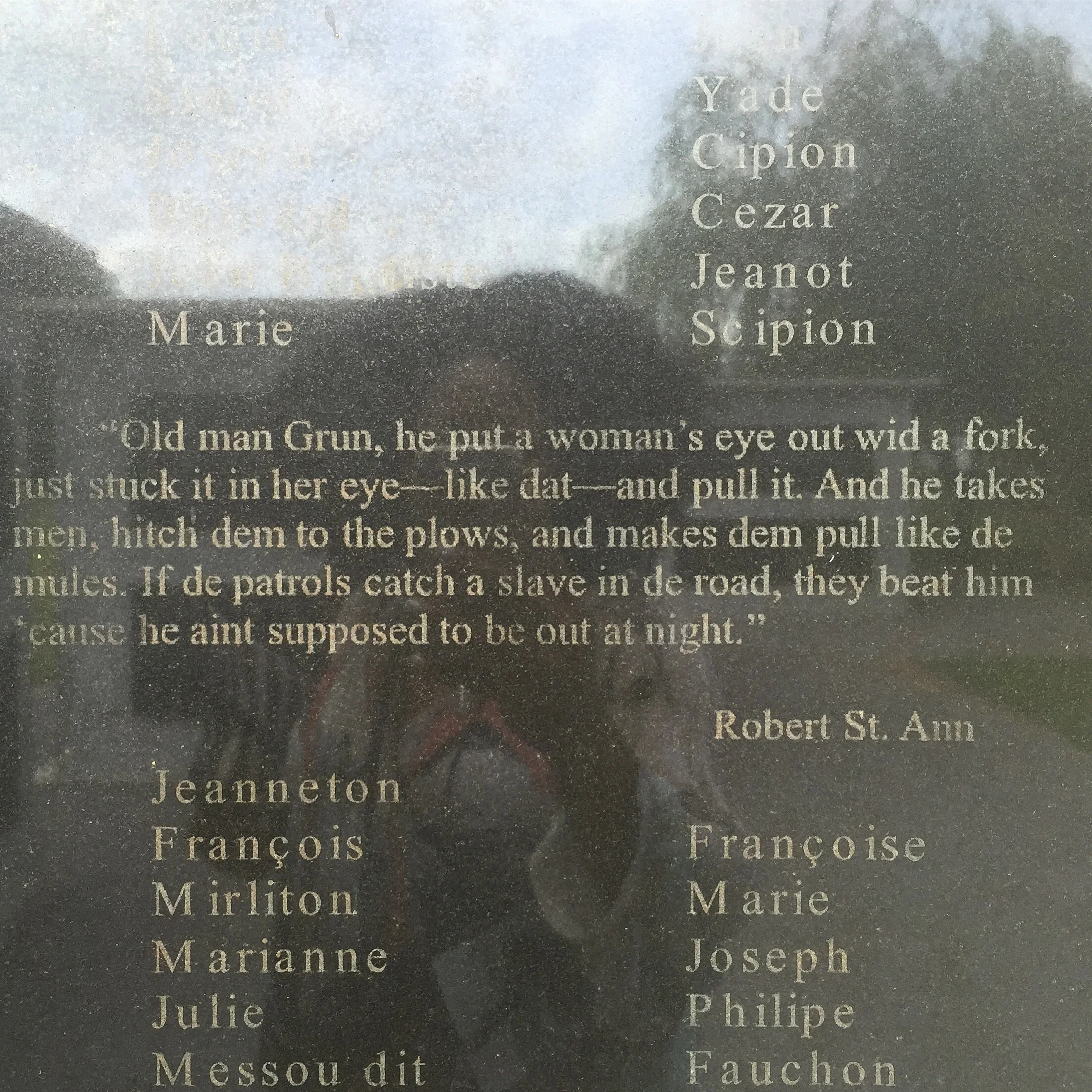I was already in New Orleans for Essence Music Festival (July 2015), so I booked a late flight back to New York and spent my final day touring plantations on River Road, most about an hour from NOLA. I rented a car for the drive out. First stop? Whitney Plantation, which came highly recommended.
Unlike most plantations, the Whitney functions as a museum solely about slavery, the only one in America. It opened in December 2014. The Big House (above) is said to be "one of the finest surviving examples of Spanish Creole architecture and one of the earliest raised Creole cottages in Louisiana".
My first stop of the plantation was the visitor's center. I had a few minuets before my tour began so I poked around the exhibits. Here are a couple things I find interesting:
A public notice that there are enslaved men and women and girls for sale in Charleston:
Everything happens in context, and its always amazing to me how technology fuels social change. Without the Portuguese engineering, the slave trade doesn't happen.
A little unknown history. I'd never heard of Queen Nzinga Mbande before my visit:
We began our tour here, at the Antioch Baptist Church, originally located on the east bank of the Mississippi River in St. James Parish. It was donated to the Whitney when the congregation built a new chapel in 1999.
After watching a video about the history of the plantation( that left me in tears), the guide handed out placards that identified several statues of enslaved children that were placed throughout the church. My "child" was Catherine Cornelius. She would was 103 when she was interviewed by journalists from he Federal Writers Project.
Catherine's story:
"Ah was a slave born and raised on de Smithfield Plantation... Ah was a grown woman when dat war broke out. Ah worked in de field cutting cane. De plantation sat on de river. Here was mo den a hundred slaves on it. De cabin was white and were was one family to a cabin. Sho, we had good times, We had singing, dancing, and visit among ourselves an on udder plantations"
This is the statue dedicated to Catherine:
After we found our "child", we moved outside to the Wall of Honor, a memorial dedicated to all the people who were enslaved on the Whitey Plantation. Many of the descriptions include the country there were taken from, most include the job they were forced to work on the plantation and their age.
On the opposite side of the wall were slave narratives given to journalists by former slaves during the Works' Progress Administration in 1936. (Fun Fact: Zora Neale Hurston, author of Their Eyes Are Watching God, was one of the many journalists who collected narratives.) The stories of life on the plantation were haunting:
Next we moved on to the slave quarters, exceptionally notable because on no tour before or since, has any guide started with the slave quarters. But this is, after all, a museum about slavery.
The big bowls outside the cabins were used in the process of making sugar cane. The guide didn't know the exact particulars, but the gist was sugar cane doesn't last very long once its been cut, so it requires immediate processing. During sugarcane season, enslaved men and women worked all day and all night indoors, in Louisiana heat, over hot fires. Heat exhaustion was a common cause of death.
Our guide noted that a bed in a slave cabin was not the norm.
Sleeping on a pallet was the more common arrangement.
We moved on to the plantation jail. Offenses that could land an enslaved person here could be anything, literally anything, your overseer or master deemed out of bounds. There was no law about whether you could lock an enslaved person up. Attempting to escape would definitely land a person here.
This picture doesn't show it, but there were small, metal circles in the walls of the cells. It was so that overseers could chain a person to the cage they were in.
Our guide pointed out the proximity to jail's proximity to the slave cabins. It served as a reminder of one of the punishments that could occur if an enslaved person was deemed to be out of line. Also notable, that the structure is made completely or iron and sitting out in the unshaded Louisiana sun. It wasn't even what Louisiana folk call hot that day (lies, all lies) and it was boiling in there.
We moved on to a memorial for 107,000 people enslaved in Louisiana as documented in the "Louisiana Slave Database" built by historian Gwendolyn Midlo Hall. The walls contained more slave narratives. I excerpted a few below.
Our final stop was the The Field of Angels, a memorial dedicated to the 2,200 enslaved children in Louisiana who didn't reach their third birthday. The statue, by Rod Moorhead, is of a Black angel carrying a Black baby to heaven. The names of the children are etched throughout the monument
For more information/to visit: http://www.whitneyplantation.com/index.html







